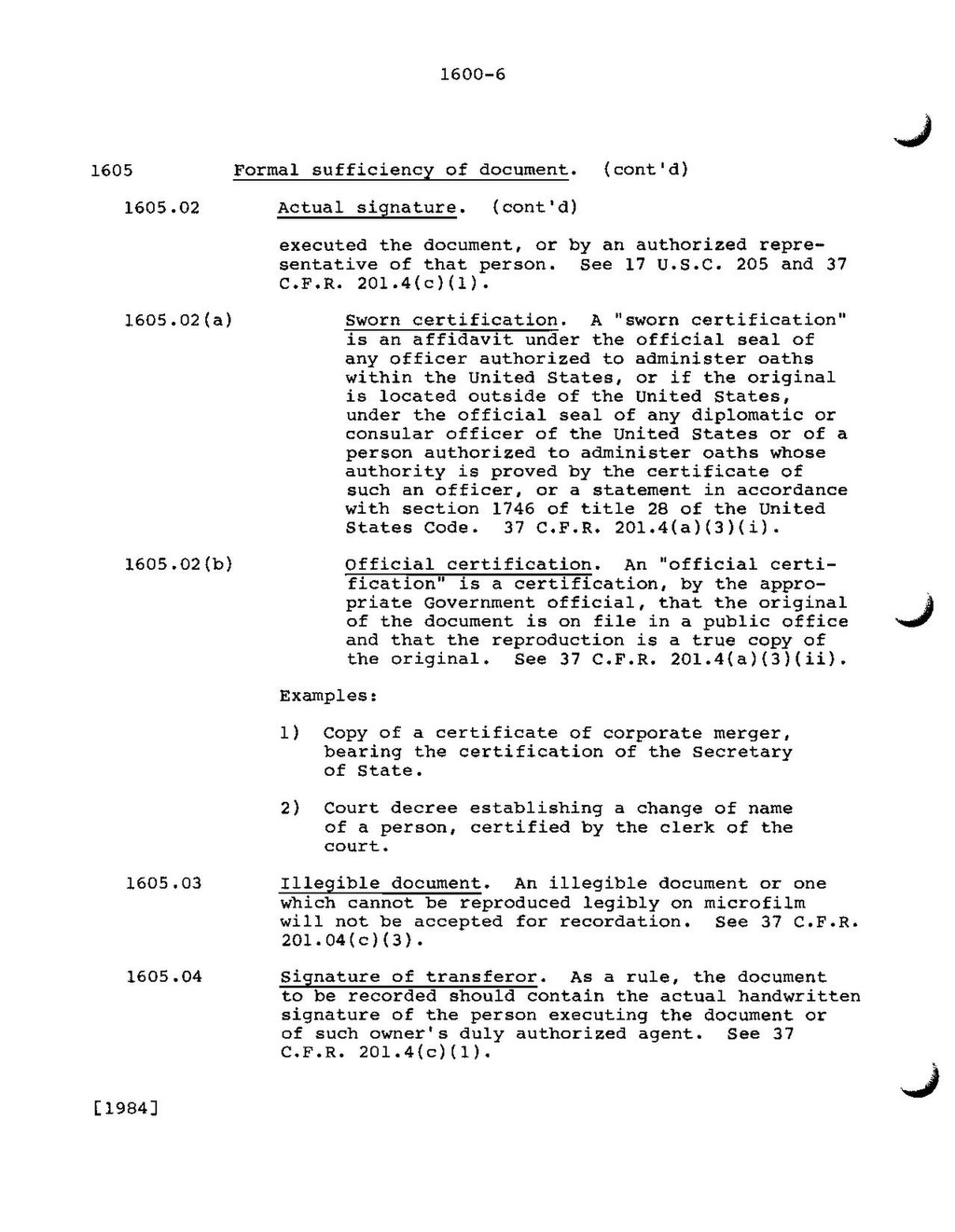1600-6
1605
Formal sufficiency of document. (cont'd)
1605.02
Actual signature. (cont'd)
executed the document, or by an authorized representative of that person. See 17 U.S.C. 205 and 37 C.F.R. 201.4(c)(1).
1605.02(a)
Sworn certification. A "sworn certification" is an affidavit under the official seal of any officer authorized to administer oaths within the United States, or if the original is located outside of the United States,
under the official seal of any diplomatic or consular officer of the United States or of a person authorized to administer oaths whose authority is proved by the certificate of such an officer, or a statement in accordance with section 1746 of title 28 of the United States Code. 37 C.F.R. 201.4(a)(3)(i).1605.02(b)
Official certification. An "official certification" is a certification, by the appropriate Government official, that the original of the document is on file in a public office and that the reproduction is a true copy of the original. See 37 C.F.R. 201.4(a)(3)(ii).
Examples:
1)
Copy of a certificate of corporate merger, bearing the certification of the Secretary of State.
2)
Court decree establishing a change of name of a person, certified by the clerk of the court.
1605.03
Illegible document. An illegible document or one which cannot be reproduced legibly on microfilm will not be accepted for recordation. See 37 C.F.R. 201. 04(c)(3)
1605.04
Signature of transferor. As a rule, the document to be recorded should contain the actual handwritten signature of the person executing the document or of such owner's duly authorized agent. See 37 C.F.R. 201.4(c)(1).
[1986]
